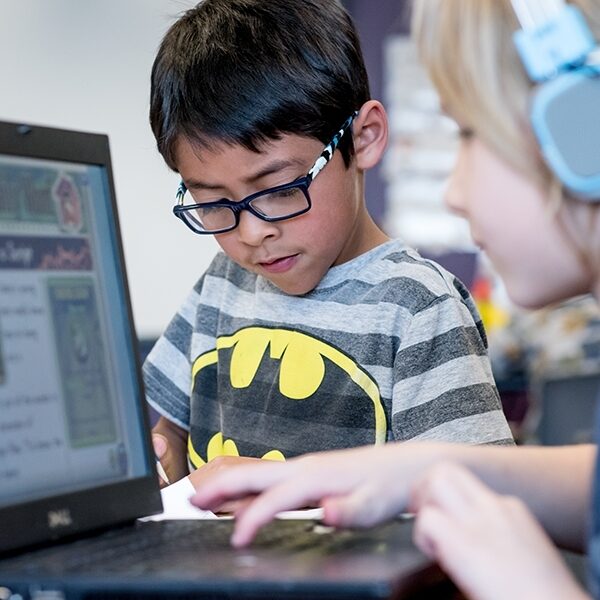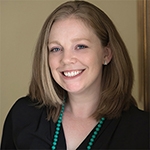
Every child deserves a highly effective and equitable education that equips them with the mastery of rigorous academic standards, mindset, and other non-academic capacities they need to reach their full and unique potential. Engaging, rigorous curriculum — that is, the “what, why, how, and when” of student learning — and the instructional materials needed to enact it is a critical, research-based component for improving student achievement and for making good on this vision for every student in every classroom across America.
Despite widespread recognition of this fact, access to high-quality, efficacious instructional materials can be limited. Purchases schools and districts make vary widely in cost, with limited relationship between spending and quality. This is particularly true for students farthest from opportunity, who might be learning in schools with limited resources or who have specific learning needs or interests that differ from peers. It’s for this reason that our organization, The Learning Accelerator (TLA), has always believed that getting high-quality, open or low-cost materials that support personalization and help close gaps in access and engagement should be an urgent priority.
So, how might we ensure that every educator has the resources they need to achieve our collective goals for kids? In 2013, TLA began to explore how Open Educational Resources (OER) — what the Hewlett Foundation defines as teaching, learning, and research materials that reside in the public domain and can be freely shared, edited and re-purposed by others — might help. Through collaboration with states, other nonprofits, and funders, we launched a new organization (now named Open Up Resources) that partnered with instructional materials providers to create comprehensive, high-quality, free, open, full-year course materials for grades K-12 in English Language Arts (ELA) and Math, aligned to the Common Core State Standards and available for every school in the U.S.
At the same time, we realized that catalyzing the production of high-quality materials was just a first step. It wouldn’t be sufficient alone for producing change in classrooms. Like any tool, OER is only as good as its use as well as the strength of the overall system in which it’s being deployed. This is particularly true in classrooms where educators are developing new, innovative, personalized approaches to instruction that seek to more dynamically meet individual needs. One-size-fits all, (or even one-size-fits most) materials won’t work well in these settings without significantly more dynamic and modular tools that maintain quality while flexing to context. We knew that materials would need to evolve in response to these changing approaches, including being deployable across analog and digital environments as well as taught more collaboratively by teams of teachers rather than in traditional student-to-teacher ratios.
Given this, in 2018 and 2019, our team dug into learning more about the actual state of curricular implementation, with a focus in cases where educators were trying to personalize instruction. We learned that there is a lot more work to be done to support both teachers and instructional materials providers in design and implementation (you can explore key findings here). But we also found incredible bright spots across the country. As we talked to school and system leaders and visited classrooms across the country, we saw mainstream adoption of open resources and emerging practices aimed at using them to better differentiate, offer greater choice-making, and deepen learning for students.
Where implemented most strongly, teachers didn’t necessarily label these resources as “OER” — indeed, instead they saw them as free, flexible resources that supported them in making in-time adjustments and modifications to student need. As communities, their OER adoption has allowed for the reallocation of resources away from purchasing to investing in time learning together about how to understand material quality and deepening content pedagogy. Their schools and districts are working to build central, systemic supports — such as shared vetting and curation processes and digital hubs for organizing and collecting data. Where needed, these educators are also able to use the money saved using OER to invest in resources outside of the core curriculum — be they analog or digital — to meet the needs of students who might require greater, targeted interventions and practice to achieve their goals.
There is never any “silver bullet” in education. It’s clear that OER is only one piece of a bigger puzzle. However, as one part of a robust system of teaching and learning, pioneering practitioners are showing how it can support greater teacher engagement with each other, their pedagogy, and subject areas, within and across school systems. Even more importantly, it’s helping these educators unlock greater levels of equity, ensuring every student gets the very best materials, assessments, and instruction.
Making good on the promise of OER will require educators and the many people who support them — including school and system leaders, professional service organizations, researchers, and funders — to embrace an “open” ethos in our work together as a larger community. Only by sharing practices, identifying collective needs, and being honest about the progress being made and challenges to overcome will we realize the potential of high-quality instructional resources for every child, in every classroom across America.
As we celebrate Open Education Week, we look forward to sharing with you over the next four days specific stories of OER in action at the state and district levels, as well as resources for creating an OER vision and developing teachers’ OER use. We hope you’ll join this conversation and share what you’re learning and doing — tweet us at @LearningAccel!
Next post: Addressing Equity with High-Quality Instructional Materials: Learnings from Virginia

